10 Best Weightlifting Complexes To Improve Your Results
Unlock your full potential by engaging with our experts and community! Have questions about your fitness journey or looking for expert advice on weightlifting techniques? Don’t hesitate — leave a comment below and Oleksiy Torokhtiy will provide a personalized answer and insights to help you reach your goals.
Torokhtiy is reader-supported. Some links are affiliate links, and we may earn a commission at no extra cost to you. See our disclosure page for details.
Olympic weightlifting complexes as a series of combined movements performed consecutively with the barbell designed to enhance multiple faces of strength technique. These complexes incorporate exercises like snatch, clean, and jerk art integral for developing power, coordination and endurance.
Olympic lifting complexes are a series of combined movements performed consecutively to enhance strength and technique and include exercises like the snatch, clean and jerk, designed to improve power, coordination and endurance. They provide training, targeting various muscle groups and boosting athletic performance.
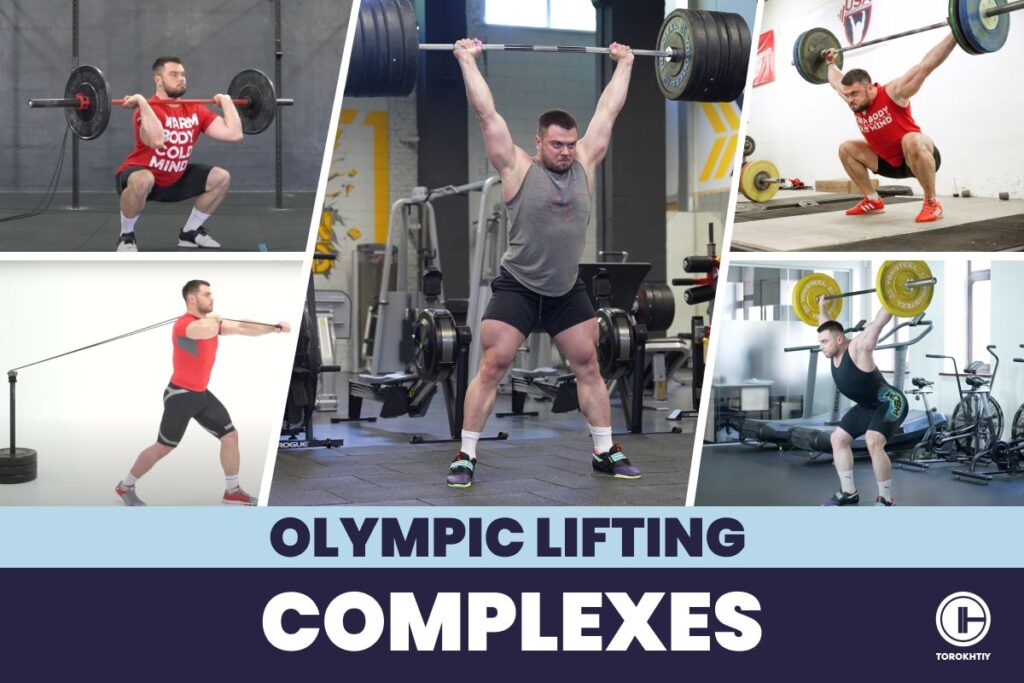
They offer a comprehensive approach to training targets in various muscle groups and improving overall athletic performance. In this article, we will dive deeper into the benefits and applications to these complexes, providing detailed insight and practical tips.
What Olympic Complexes Really Are?
Olympic complexes or complex lifts are a series of weightlifting movements performed sequentially without putting the bar down or without having full rest. These exercises combine various lifts into one continuous set, targeting different phases of lift or multiple muscle groups simultaneously.
Historically, these complexes have evolved as a means to enhance training efficiency, improve technique and increase overall strength endurance. Weightlifting complexes originated from the need to address specific weaknesses and to increase volume without the added strain of multiple sets of heavy lifts.
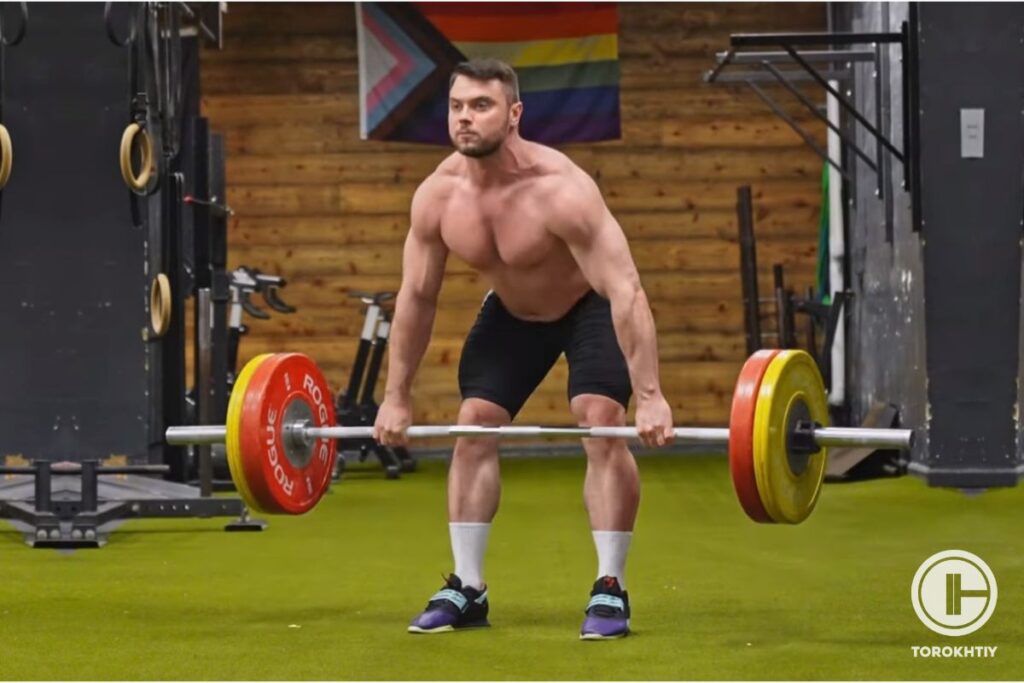
By performing these sequential movements, lifters can focus on different aspects of their technique and build better neuromuscular coordination. These complexes are integral to the training routines of competitive weightlifters and have been adopted across various strength and conditioning programs for their effectiveness in improving functional strength and movement patterns.
Save it for easy access!
Bookmark this page now to access the program and instructional videos anytime, anywhere.
Stop wasting time searching during your gym sessions.
Why Should You Include Them Into Your Routine?
Olympic weightlifting complexes are invaluable tools for both athletes and general fitness enthusiasts. One of the primary benefits of incorporating these complexes into your routine is the improvement of strength endurance and neuromuscular control.
Unlike isolated exercises, complexes engage multiple muscle groups simultaneously, promoting muscular endurance and overall strength. This makes them an excellent choice for those looking to build a robust resilient body.
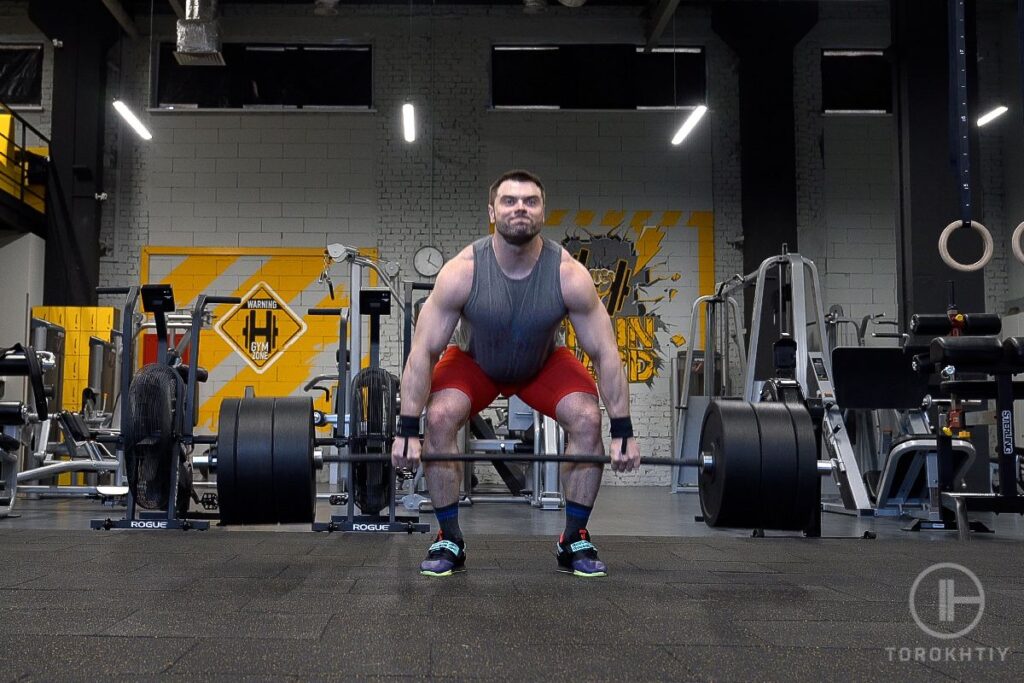
Additionally, these complexes help solidify movement patterns. By repeating a sequence of movements, listers can reinforce proper technique and form, reducing the risk of injury and improving performance.
Moreover, weightlifting complexes are a great way to add volume to your training. Performing multiple lifts in a single set, increases the workload without significantly extending the duration of your workout. This is ideal for those with limited time, ensuring that each session is both effective and efficient.
Follow us!

Free!
Get a 2-week Weightlifting Program as a bonus for the subscription to kickstart your training plan!

Free!
4 Benefits of Olympic Weightlifting Complexes
Olympic weightlifting complexes offer a multitude of benefits that go beyond traditional lift and routines. These complexes enhance various aspects of physical performance, including technique, strength endurance and movement patterns.
Incorporating these exercises into your training regimen can lead to significant improvements in overall athleticism and fitness. Let’s explore the specific benefits in detail.
✅ Technique
Olympic weightlifting complexes are highly effective tools for improving lifting techniques. By breaking down the snatch, clean or jerk into smaller manageable parts, lifters can hone in on their weaknesses and improve their overall form.
For example, a common complex for the snatch might include a snatch pull, followed by a power snatch. This combination allows lifters to focus on the initial pull from the ground and explosive movement required to lift the bar overhead. By practicing these elements separately and then together, lifters can develop better coordination and timing.
Complexes also aid in error correction. For instance, a lifter who struggles with the transition from the pull to the catch in a clean, can benefit from a complex that includes clean pull, hang clean and front squat.
Furthermore, complexes place an emphasis on specific parts of the lift, allowing for targeted improvements. A snatch complex that includes an overhead squat can help lifters improve their stability and balance when holding the bar overhead. This targeted approach ensures that lifters develop a well-rounded skill set and can execute lives more efficiently.
✅ Strength Endurance
In the realm of weightlifting, strength endurance is crucial for athletes who need to maintain high levels of force production over extended periods. Olympic lifting complexes are particularly effective in developing this attribute due to their repetitive and compound nature.
These complexes involve performing multiple exercises back-to-back with minimal rest, challenging both muscular strength and endurance simultaneously.
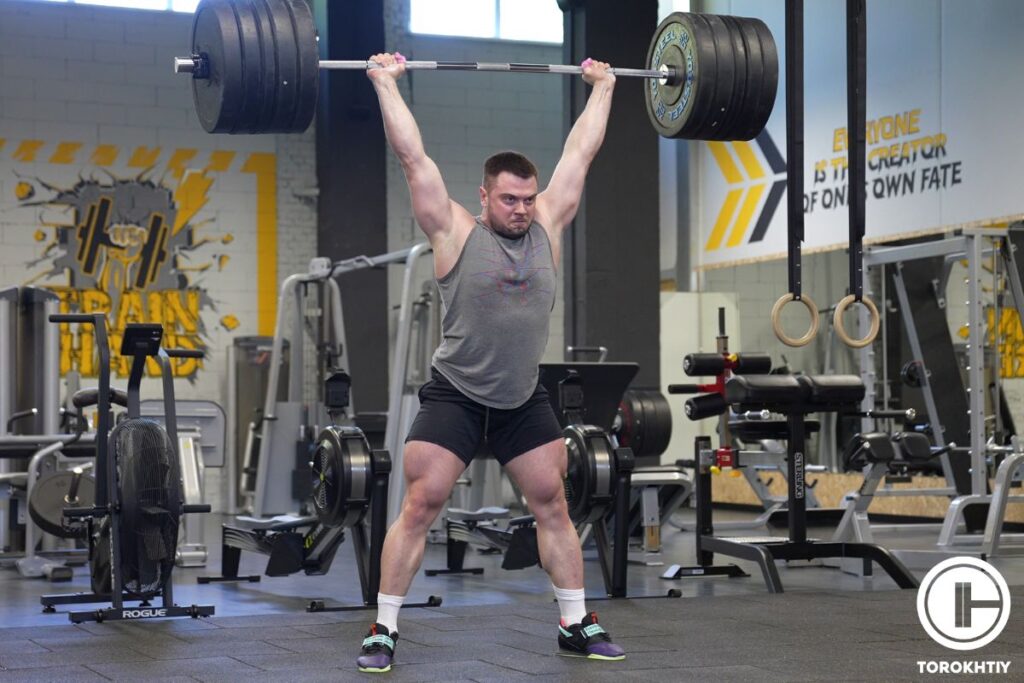
One of the key benefits of using complexes for strength endurance is their ability to induce significant metabolic stress. This stress leads to increased muscle endurance, allowing athletes to perform at higher intensity for longer durations.
For instance, a strength complex such as Clean + Front Squat combination, not only builds raw power, but also enhances the athletes abilities to sustain high force output through multiple repetition.
Integrating weightlifting complexes into training routines also aids in improving cardiovascular efficiency. The continuous movement with varying loads and exercises elevate heart rate, mimicking the demand of competitive scenarios, where athletes must maintain performance without succumbing to fatigue.
Furthermore, these complex weightlifting exercises promote better neuromuscular adaptations. By repeatedly performing compound movements, the body becomes more efficient at recruiting muscle fibers and coordinating between different muscle groups, which is essential for prolonged strength activities.
✅ Solidifying Movement Patterns
Olympic lifting complexes are instrumental insulin proper movement patterns. By combining multiple lifts into one continuous sequence, athletes can reinforce correct technique and improve neuromuscular coordination.
This method promotes muscle memory, ensuring each phase of the lift is executed correctly and efficiently. Complexes create a repetitive dynamic practice environment that challenges the athletes form under varying conditions, which is crucial for ingraining the precise mechanics needed for successful lift
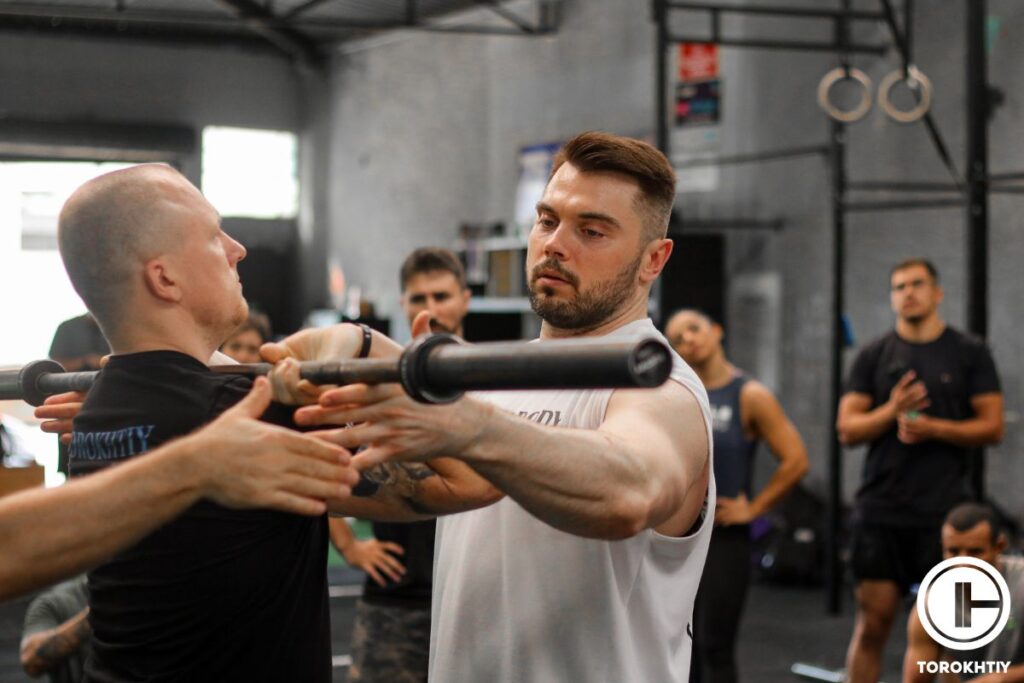
For example, a complex that includes a snatch pull, followed by a power snatch, and an overhead squat can help lifters understand and master the transition phases between each movement. This repetitive sequence allows athletes to focus on fluidity and precision, leading to more consistent performance.
In all sports, being efficient not only means how well you can generate force but also when not to, and how fast you can switch from contraction to relaxation. This is one of the main differences between TOP pro athletes and their pro colleagues (crucial in combat sports).
Tips From the Champ
When you’re working on snatch and C&J complexes, remember that it’s not just about moving the weight – it’s about controlling it through every phase. In my training approach, they’re the secret weapon for breaking through plateaus.
Olympic Weightlifting Champion
✅ Volume
Training volume – the total amount of weight lifted in a session is a crucial factor in strength and conditioning programs. High volume training helps build muscle endurance, increase strength and improve overall work capacity.
Olympic weightlifting complexes with their multi-rep and multi-set nature, allow athletes to achieve high training volumes effectively.
One of the primary benefits of using complexes in training is the ability to accumulate a significant amount of volume without causing excessive fatigue. By combining multiple exercises into one sequence, athletes can target various muscle groups and movement patterns in a single set.
This approach not only maximizes time efficiency, but also ensures that the muscles are worked thoroughly without the need of numerous separate exercises.
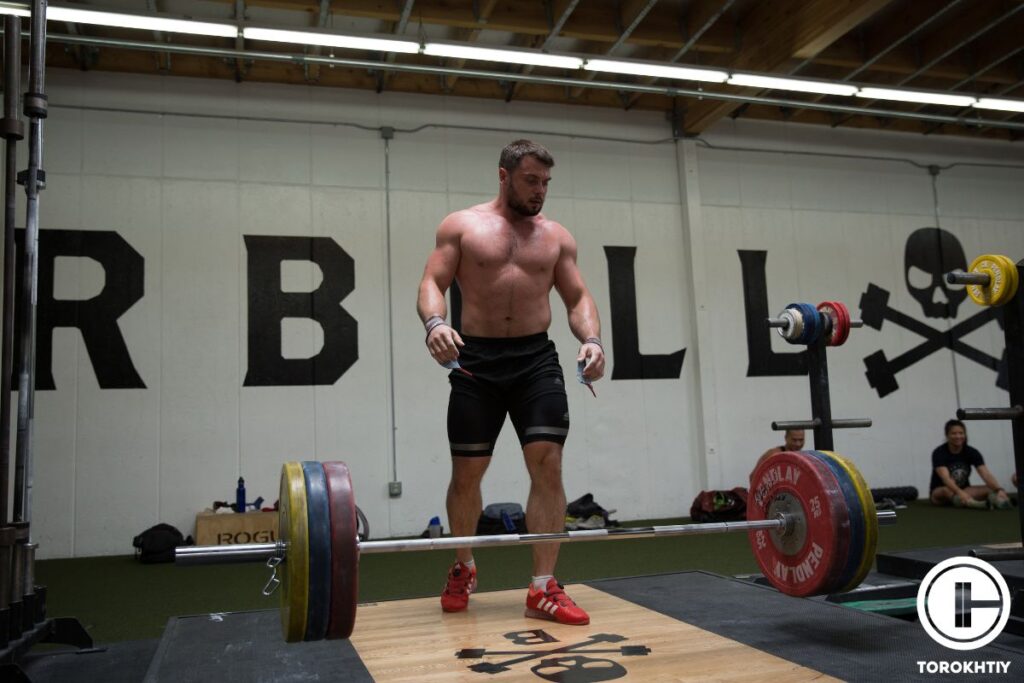
Complexes such as the Snatch + OHS or Clean + Front Squat, allow lifters to perform multiple reps of different movements back-to-back. This continuous sequence keeps the muscles under tension for extended periods, promoting hypertrophy and strength gains.
Additionally, the varied nature of the movements within a complex helps in distributing the workload more evenly across different muscle groups, reducing the risk of overtraining specific areas.
Furthermore, Olympic weightlifting complexes can be tailored to suit different training goals. For instance, athletes aiming to improve muscular endurance can increase the number of reps per complex, while those focusing on strength can add more weight and reduce the reps. This flexibility makes a complex versatile tool for programming effective high volume training sessions.
10 Common Olympic Complexes
Olympic weightlifting complexes combine multiple lifts into a single set, enhancing technique, strength and endurance. These complexes are essential for efficient training and are widely used by athletes. Below, we explore common complexes that include the snatch, clean and jerk detailing their structure and benefits.
1. Including Snatch
Snatch complexes are essential in developing techniques, strength and coordination necessary for Olympic weightlifting. These complexes typically combine various snatch related movements to target specific aspects of the lift, ensuring comprehensive development.
• TOR Complex
The TOR complex is a powerful training combination that integrates three critical movements: the snatch, snatch balance and overhead squat.
This complex was designed by famous Ukrainian Olympian Oleksiy Torokhtiy to enhance technical precision, strength, and stability throughout the entire snatch motion in his training process. And later on was introduced by him to the weightlifting community by numerous fun challenges in the social media.
Combining these exercises into a complex allows lifters to practice the full snatch movement pattern, while addressing specific technical components and improving overall strength.
The TOR complex is particularly beneficial for development of better bar path control, shoulder stability and leg strength, making it an essential addition to any Olympic lifting routine.
• Snatch Pull + Snatch/Power Snatch
Snatch Pull + Snatch/Power Snatch complex is an essential drill that combines the strength-building benefits of the snatch pull with the explosive power of the snatch. This complex focuses on refining the pull of the lift, which is crucial for generating the necessary force to elevate the bar effectively.
In the pull, the lifter emphasizes a strong and controlled upward pull from the ground, focusing on engaging the back shoulders and traps. This movement helps in developing the pulling strength and reinforce the correct bar path. Transitioning into the snatch, the lifter can execute full lift, ensuring a smooth transition from the initial to catch phase.
• Snatch + Overhead Squat
This combination is a staple in Olympic weightlifting training. This complex not only emphasizes the explosive power needed for the snatch, but also enhances the stability and mobility required for the overhead position.
Starting with a snatch, the lifter moves the bar from the ground to an overhead position. This phase of the complex targets multiple muscle groups including the legs, back, shoulders and core, fostering explosive strength and coordination.
Once the bar is overhead, the lifter transitions into overhead squat, which demands high-level of shoulders stability, core strength, and total body mobility.
2. Including Clean
Clean is a fundamental Olympic lift that can be integrated into various complexes to enhance strength, power and technique. Here we explore some effective clean complexes.
• Clean + Front Squat
Clean + Front Squat complex is an effective combination that targets multiple muscle groups and enhances overall lifting performance. This complex involves performing a clean to bring the barbell to the front rack position, immediately followed by front squat. This sequence not only builds strength and power, but also reinforces proper technique and form.
• Clean Pull + Power Clean
Clean Pull + Power Clean complex is an effective combination that emphasizes both the strength and technique aspect of the clean. This complex starts with the pull which focuses on generating through the hips and legs while ensuring proper bar path and posture.
Following the clean pull, the power cleans are executed, allowing the lifter to catch the bar in the partial squat position, which enhances explosiveness and speed under. Training benefits of this complex include improved pulling strength, better coordination and enhanced explosive power.
• Clean High Pull + Hang Clean
Clean High Pull + Hang Clean complex is an excellent combination for athletes to enhance their explosive power and refine their clean technique. This complex begins with a clean high pull, which focuses on developing powerful hip extension. It emphasizes the explosive phase of the clean, helping to improve speed and power in the lift.
After the high pull, the athlete transitions into the hang clean. This movement starts from the hanging position above or below the knees, reinforcing proper pulling mechanics and timing. The hang clean is beneficial for working on the transition phase and the catch position, ensuring the lifter can receive the bar with stability and control.
3. Including Jerk
The jerk is a critical component of Olympic weightlifting, enhancing upper body power and stability. Combining the jerk with other movements can create effective complexes that build comprehensive strength and technique.
• Front Squat + Jerk
Combining jerk with a front squat is an excellent way to enhance leg strength and overhead stability. The front squat strengthens the quads, glutes and core which are essential for the jerk. This combination ensures that the athlete is strong and stable in the receiving position of the jerk.
The front squat and jerk complex help in improving the athletes balance, coordination and strength endurance. By practicing this complex, athletes can develop the ability to maintain a stable torso and strong core throughout the lift, which is crucial for successful C&J.
• Back Squat + Jerk Behind the Neck
The back squat develops significant leg strength, focusing on quad, hamstring and glutes. Following up with a jerk behind the neck, this complex enhances shoulders stability and overhead strength.
This combination not only improves overall strength, but also refines technique and coordination between the lower and upper body. It’s particularly beneficial for Olympic weightlifters looking to enhance their stability and power.
• Push Press + Jerk
Push Press + Jerk complex is excellent for building overhead strength and refining explosive power. This combo enhances shoulder strength, coordination, and overall power, making it ideal for athletes, aiming to improve their overhead lifting skills.
• Clean + Front Squat + Jerk
Clean + Front Squat + Jerk complex is a powerful combination that targets multiple aspects of strength and technique in Olympic weightlifting.
One of the key benefits of this clean and jerk complex is the flexibility and rip schemes, allowing lifters to focus on different training objectives. For example, performing multiple reps of clean (2-3 reps), before transitioning into a single front squat and jerk can improve clean technique and endurance.
Alternatively, executing a single clean, followed by multiple front squats (2-3 reps) before a jerk can enhance length, strength and endurance.
Another variation could involve multiple jerks after a single clean and front squat, emphasizing overhead stability and power. This flexibility in rep schemes allows athletes to tailor the complex to their specific needs, whether it’s technique refinement, strength building or endurance training
Integration of Complexes Into Training
Integrating complexes into your training can significantly enhance your performance and efficiency. By incorporating these structured sequences of lifts, athletes can target specific areas of improvement while maintaining overall balance in their workout regimen.
In this section, we will discuss key considerations for choosing the right complex, using them in warm-ups, accessory work and finishers to maximize training results.
1. Choosing The Right Complex
Selecting the complex is essential for achieving your specific goals. The key to choosing the right complex is to align it with your individual needs and objectives.
For athletes, focusing on improving technique, complexes like Snatch Balance + Overhead Squat can help reinforce proper form and stability.
If your goal is to build explosive power, consider incorporating a complex such as Clean Pull + Power Clean. These exercises engage fast which muscle fibers and improve your ability to generate force quickly, which is crucial for athletic performance and sports like football and track & field.
For those aiming to enhance strength endurance, complexes like the Snatch + Overhead Squat or Clean + Front Squat are excellent choices. These combinations allow for higher training volume without excessive fatigue, promoting muscular endurance and stamina.
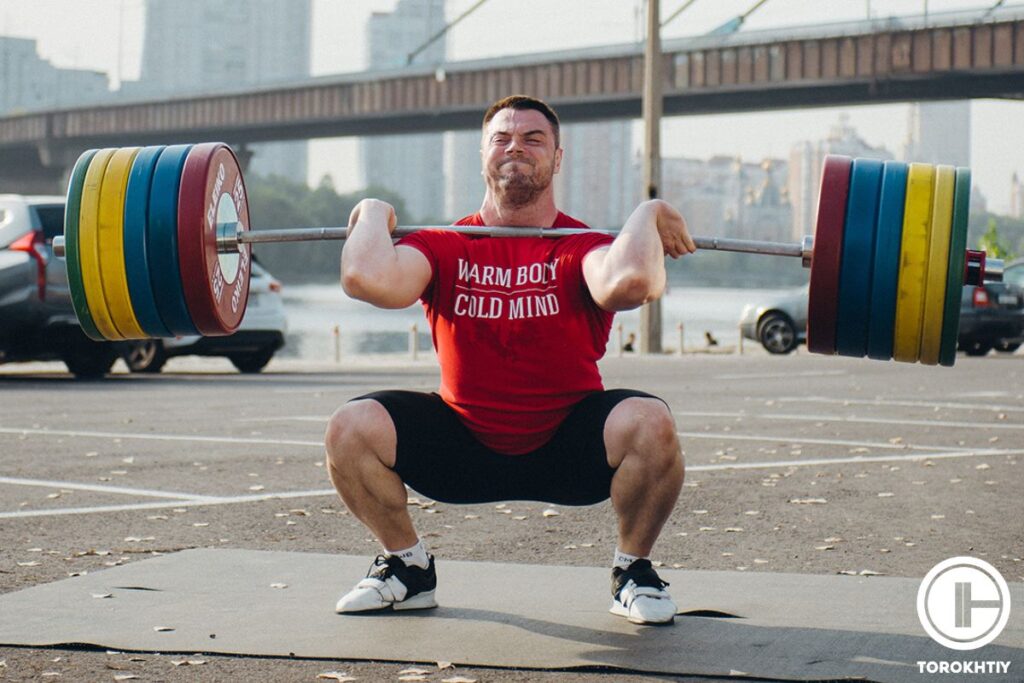
It’s important to consider your current skill level and experience. Beginners might start with simpler complexes that focus on fundamental movements, while advanced lifters can tackle more challenging sequences that demand higher levels of coordination and strength.
Ultimately, the right complex should challenge you appropriately, address your weaknesses and compliment your overall training program. By thoughtfully selecting and integrating weightlifting complexes, you can maximize your training efficiency and achieve well-rounded athletic development.
2. Warmup
Warmup is crucial before performing any lift to prepare your body and reduce the risk of injury. Complexes, such as snatch or clean complexes can be an effective part of your warm up routine.
This complexes not only activates the relevant muscle groups, but also improves mobility and coordination, setting a solid foundation for the main lift.
A comprehensive warm-up can include such light complexes:
or
- 3 clean pulls + 2 power cleans
Using complexes as a part of your warm-up helps to ensure that your muscles are ready for the heavy lifting to come, thereby enhancing your overall performance and reducing the likelihood of injury.
3. Accessory Work
Incorporating complexes into your accessory work is essential to enhance the benefits of the training process. Accessory exercises focus on targeting specific muscle groups and improving weaknesses, thereby complementing the primary lifts.
These exercises can help build muscle endurance, and balances and increase overall strength contributing to better performance.
4. Finisher
Using complexes as finishers can be an effective way to cap off a workout, maximizing the benefits of your training session. Complexes serve as excellent finishers because they maintain intensity while ensuring the involvement of multiple muscle groups, pushing your endurance and strength to their limits.
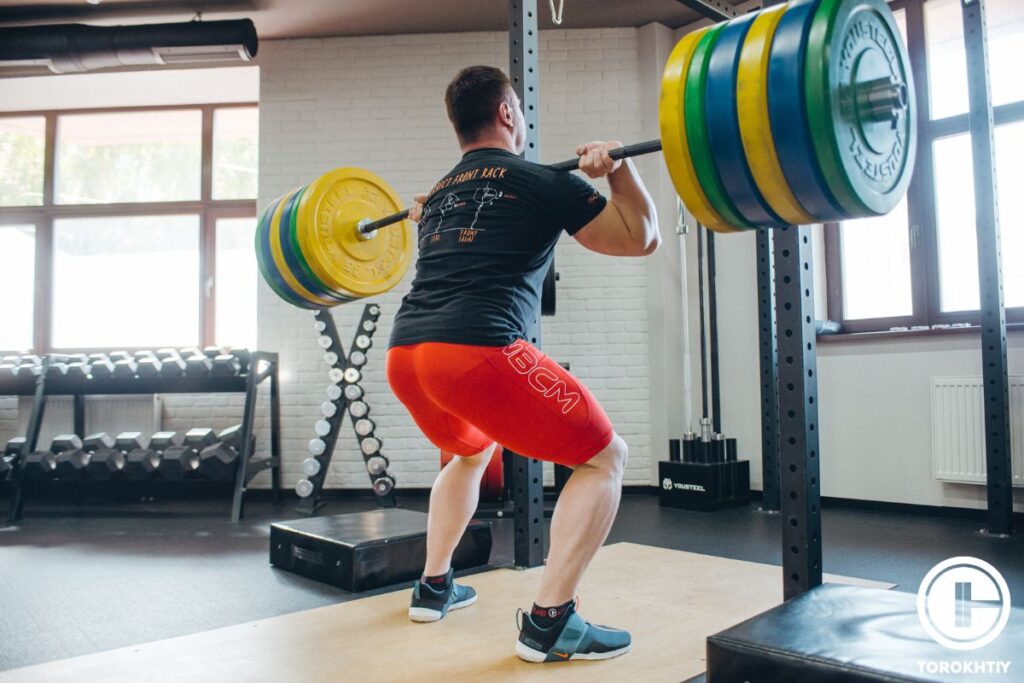
An example of a finisher complex could include a sequence like Clean Pull + Power Clean + Front Squat. This combination not only exhausts the muscles already worked, but also reinforces the movement patterns and techniques practiced early in the session. Finishers like this ensure that the workouts ends on high note, leaving the athlete feeling accomplished.
Conclusion
Olympic lifting complexes offer numerous benefits, including improved technique, strength and overall athletic performance. Incorporating these complexes into your training routine can lead to significant advancements in functional strength and movement efficiency.
Whether you are an athlete or fitness enthusiast, these exercises can help you reach your fitness goals more effectively. Have you tried incorporating complexes into your training? Share your experiences and tips in the comments below. If you need personalized advice, feel free to reach out and we will be happy to provide further recommendations.
References:
- Morris SJ, Oliver JL, Pedley JS, Haff GG, Lloyd RS. Comparison of Weightlifting, Traditional Resistance Training and Plyometrics on Strength, Power and Speed: A Systematic Review with Meta-Analysis. Sports Med. 2022 Jul;52(7):1533-1554. doi: 10.1007/s40279-021-01627-2. Epub 2022 Jan 13. PMID: 35025093; PMCID: PMC9213388.
- Soriano MA, Suchomel TJ, Comfort P. Weightlifting Overhead Pressing Derivatives: A Review of the Literature. Sports Med. 2019 Jun;49(6):867-885. doi: 10.1007/s40279-019-01096-8. PMID: 30924081; PMCID: PMC6548056.
- Comfort P, Haff GG, Suchomel TJ, Soriano MA, Pierce KC, Hornsby WG, Haff EE, Sommerfield LM, Chavda S, Morris SJ, Fry AC, Stone MH. National Strength and Conditioning Association Position Statement on Weightlifting for Sports Performance. J Strength Cond Res. 2023 Jun 1;37(6):1163-1190. doi: 10.1519/JSC.0000000000004476. Epub 2023 Mar 22. PMID: 36952649.
- Calhoon G, Fry AC. Injury rates and profiles of elite competitive weightlifters. J Athl Train. 1999 Jul;34(3):232-8. PMID: 16558570; PMCID: PMC1322916.
- Serrano N, Colenso-Semple LM, Lazauskus KK, Siu JW, Bagley JR, Lockie RG, Costa PB, Galpin AJ. Extraordinary fast-twitch fiber abundance in elite weightlifters. PLoS One. 2019 Mar 27;14(3):e0207975. doi: 10.1371/journal.pone.0207975. PMID: 30917128; PMCID: PMC6436686.
- Photos by Torokhtiy Media Team.
Why Trust Us?
With over 20 years in Olympic weightlifting, strength training, nutrition coaching, and general fitness our team does its best to provide the audience with ultimate support and meet the needs and requirements of advanced athletes and professional lifters, as well as people who strive to open new opportunities and develop their physical capabilities with us.
By trusting the recommendations of our certified experts in coaching, nutrition, and sports training programming, as well as scientific consultants, and physiotherapists, we provide you with thorough, well-considered, and scientifically proven content. All the information given in the articles concerning workout programming, separate exercises, and athletic performance, in general, is based on verified data.
The product testing process is described in more detail here.
Author: Oleksiy Torokhtiy
Olympic Weightlifting Champion
Best Results: Snatch – 200 kg,
C&J – 240 kg
Oleksiy Torokhtiy is a professional athlete boasting 20 years of experience in Olympic weightlifting. With multiple European and World titles under his belt, he has showcased his prowess in two Olympic Games (Beijing 2008 and London 2012). Upon concluding his illustrious career, Oleksiy dedicated himself to coaching. By 2022, he had conducted over 200 weightlifting seminars worldwide. He is the visionary behind an international sportswear and accessories brand known for its motto, “Warm Body Cold Mind.” Additionally, he is an esteemed author and the creator of a series of training programs and eBooks.


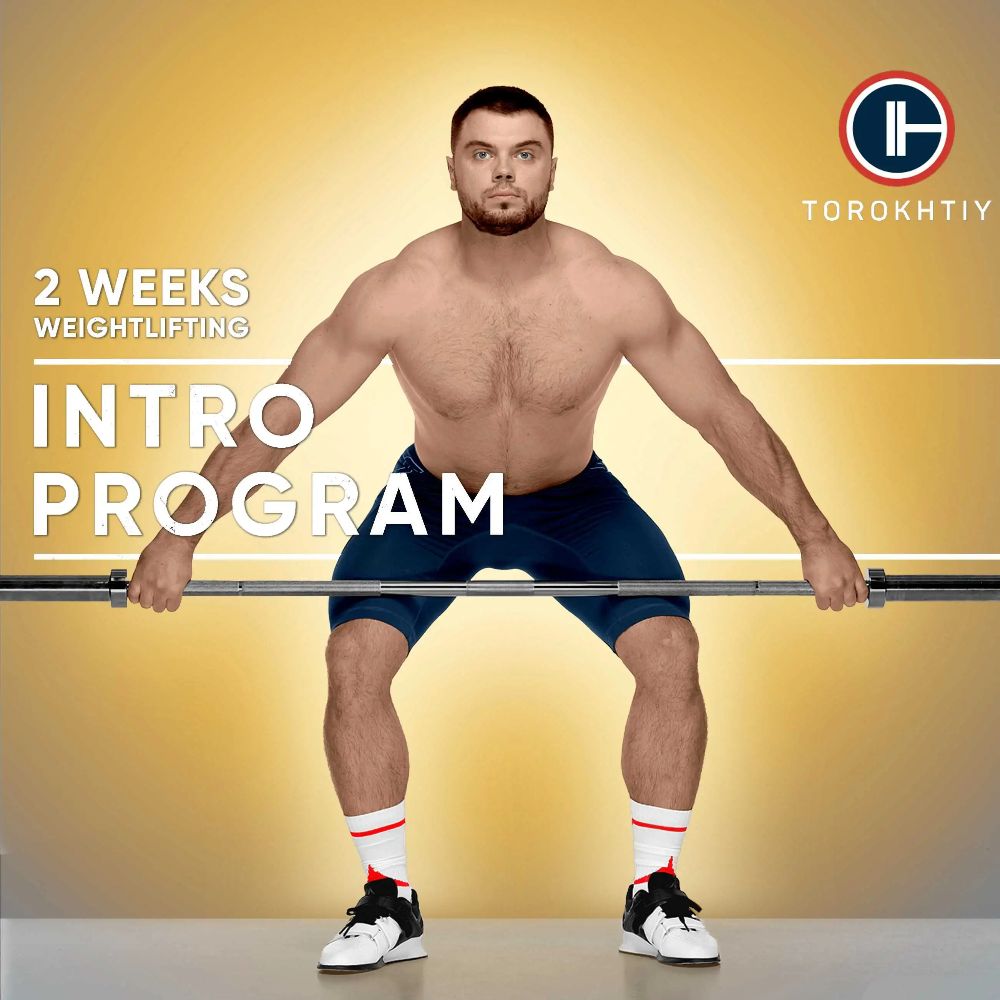

Still have questions after reading our article? Unlock your full potential by engaging with our experts and community! Don’t hesitate — leave a comment below and Oleksiy Torokhtiy will provide a personalized answer and insights to help you reach your goals.